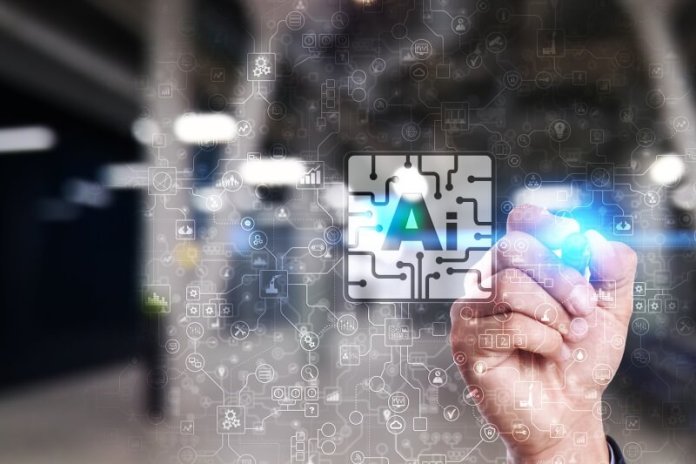AI model risk management has moved to the forefront of contemporary concerns for statistical Artificial Intelligence, perhaps even displacing the notion of ethics in this regard because of the immediate, undesirable repercussions of tenuous machine learning and deep learning models.
AI model risk management requires taking steps to ensure that the models used in artificial applications produce results that are unbiased, equitable, and repeatable.
The objective is to ensure that given the same inputs, they produce the same outputs.
If organizations cannot prove how they got the results of AI risk models, or have results that are discriminatory, they are subject to regulatory scrutiny and penalties.
Strict regulations throughout the financial services industry in the United States and Europe require governing, validating, re-validating, and demonstrating the transparency of models for financial products.
There’s a growing cry for these standards in other heavily regulated industries such as healthcare, while the burgeoning Fair, Accountable, Transparent movement typifies the horizontal demand to account for machine learning models’ results.
AI model risk management is particularly critical in finance.
Financial organizations must be able to demonstrate how they derived the offering of any financial product or service for specific customers.
When deploying AI risk models for these purposes, they must ensure they can explain (to customers and regulators) the results that determined those offers.
READ MORE: 10 Applications of Machine Learning in Finance
READ MORE: Top 10 Ways Artificial Intelligence is Impacting Healthcare
There are similar expectations in insurance, healthcare, and other industries.
The problem is the issue of explainability and interpretability for the probabilistic models generating accuracy worthy of operationalizing.
Interpretability involves understanding when model inputs affect weights, how they’re weighted, why, and how they affect the output.
Explainability focuses on understanding this process in verbal terms instead of numeric ones.
Neither is easily achieved with the multi-parameter and hyper-parameter models yielding the most accuracy.
But AI knowledge graphs considerably assist both interpretability and explainability for so-called ‘black box’ techniques (deep neural networks, complicated random forests, etc.) and straightforward white box ones.
Understanding where data came from, what happened to them upon ingestion, and how they were used in model training data enables organizations to better understand production model outputs—and readily explain them to regulators and customers.
By decreasing the risks of such models, users proportionately increase their enterprise worth.
White Box Techniques
The data lineage of AI knowledge graphs is indispensable for using white box machine learning techniques, largely because of the way this technology functions as a whole.
Machine learning outputs are entirely based on their inputs; when building models, those outputs are the results of training data.
When deploying those models in production, any slight change in the input data is bound to produce different outputs because many machine learning models are brittle.
It’s necessary to understand as much about the initial training datasets as possible to ensure they deliver the same outcomes in production that they did during the building phase.
The traceability of AI knowledge graphs is inestimable in this regard, because it’s a fundamental byproduct of these linked data repositories.
These graphs connect all data in uniform, standardized data models in a format in which the data themselves are self-describing.
Numerous aspects of those data’s journey throughout the enterprise are readily linked to those models—including aspects of metadata and data provenance.
By preparing machine learning training data with AI knowledge graphs, organizations can understand where their data came from and how they were cleansed, transformed, integrated, and ultimately loaded into machine learning models.
The visual nature of these graphs also assists with retracing those various facets of data provenance for a firm understanding of what the model required of the training data to produce its desired outputs.
That traceability serves as a blueprint for the production data’s requirements to generate the same outputs, increasing explainability.
MORE – Top 25 AI Software for the Banking Industry
Black Box Techniques
The multifaceted nature of the numerous parameters and hyper-parameters of deep neural networks and other black-box machine learning applications exacerbates these models’ explainability.
The distributed processing power of sophisticated deep learning environments also adds to the overall complexity.
However, the same provenance gains necessary for consistent production level outputs of white-box models can aid the explainability of seemingly opaque machine learning models.
One of the techniques for initiating explainability with black box options is to adjust the various weights involved to evaluate their effects on model outcomes.
Emphasizing one particular weight—as opposed to another—reveals the importance of those weights in the model’s results, delivering insight into how some of the inner layers of a neural network, for example, are operating.
The data lineage of AI knowledge graphs is important to this process because it enables data scientists to understand the specifics of the training data used to produce the model’s initial results during its creation.
That knowledge is useful for comparing how the weights responded to the training data versus how they’re responding to the production data.
Duplicating the training data process enables data scientists to use both datasets for adjusting the weights to understand their significance for the outputs.
The provenance of AI knowledge graphs allows data scientists to recreate the training data characteristics and explore how modifying the model’s weights with production data attributes and training data attributes influences its results.
Decreasing AI Model Risk
Facilitating explainability, interpretability, and even repeatability for machine learning models has been a longstanding challenge with few easy answers.
Nonetheless, data provenance’s granular traceability of what was done to data to train models substantially helps each of these issues.
AI knowledge graphs are unsurpassable in facilitating such provenance and managing model risk for these concerns.
READ MORE: RPA – 10 Powerful Examples in Enterprise




















